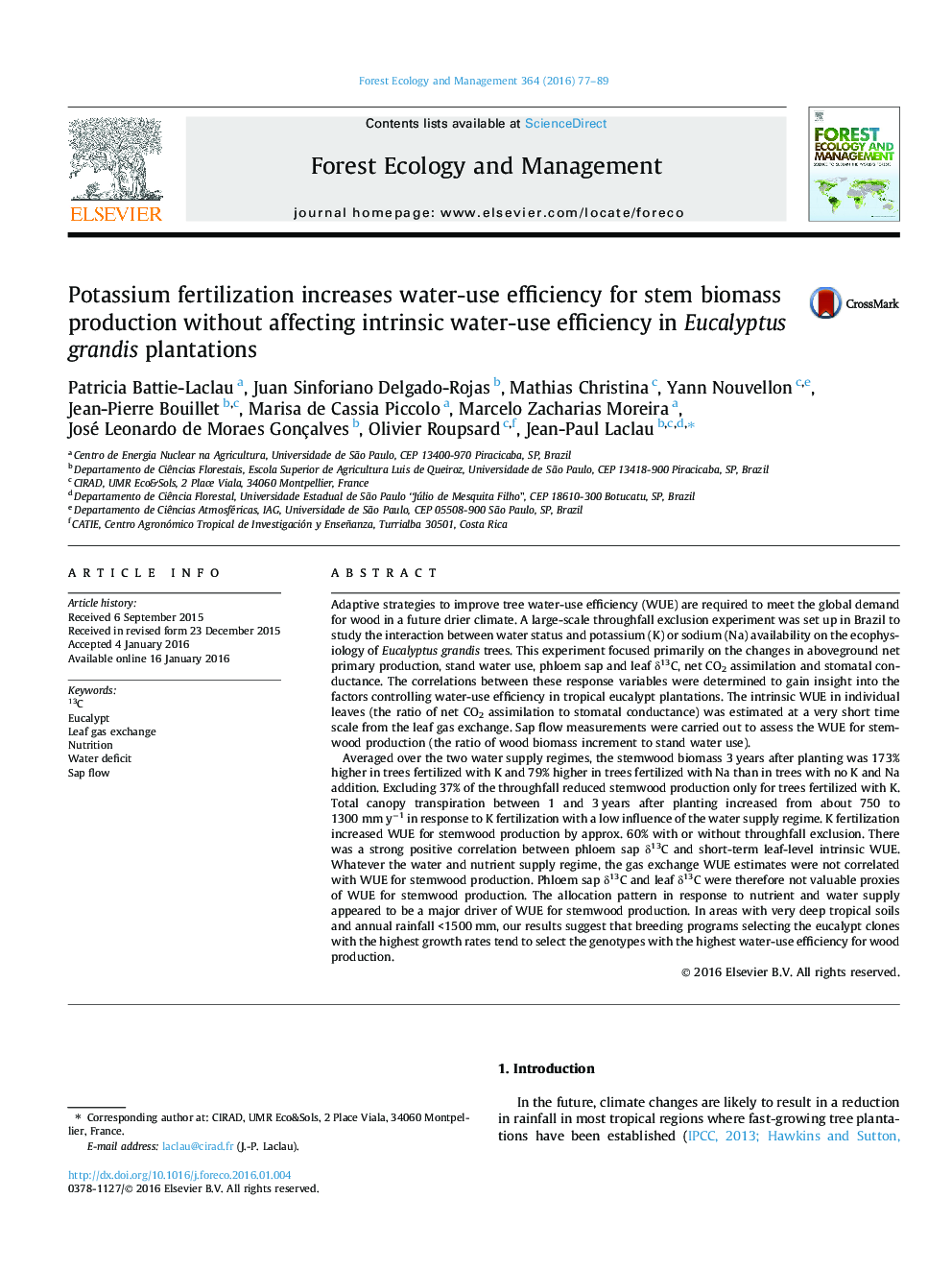| Article ID | Journal | Published Year | Pages | File Type |
|---|---|---|---|---|
| 6542384 | Forest Ecology and Management | 2016 | 13 Pages |
Abstract
Averaged over the two water supply regimes, the stemwood biomass 3 years after planting was 173% higher in trees fertilized with K and 79% higher in trees fertilized with Na than in trees with no K and Na addition. Excluding 37% of the throughfall reduced stemwood production only for trees fertilized with K. Total canopy transpiration between 1 and 3 years after planting increased from about 750 to 1300 mm yâ1 in response to K fertilization with a low influence of the water supply regime. K fertilization increased WUE for stemwood production by approx. 60% with or without throughfall exclusion. There was a strong positive correlation between phloem sap δ13C and short-term leaf-level intrinsic WUE. Whatever the water and nutrient supply regime, the gas exchange WUE estimates were not correlated with WUE for stemwood production. Phloem sap δ13C and leaf δ13C were therefore not valuable proxies of WUE for stemwood production. The allocation pattern in response to nutrient and water supply appeared to be a major driver of WUE for stemwood production. In areas with very deep tropical soils and annual rainfall <1500 mm, our results suggest that breeding programs selecting the eucalypt clones with the highest growth rates tend to select the genotypes with the highest water-use efficiency for wood production.
Related Topics
Life Sciences
Agricultural and Biological Sciences
Ecology, Evolution, Behavior and Systematics
Authors
Patricia Battie-Laclau, Juan Sinforiano Delgado-Rojas, Mathias Christina, Yann Nouvellon, Jean-Pierre Bouillet, Marisa de Cassia Piccolo, Marcelo Zacharias Moreira, José Leonardo de Moraes Gonçalves, Olivier Roupsard, Jean-Paul Laclau,
